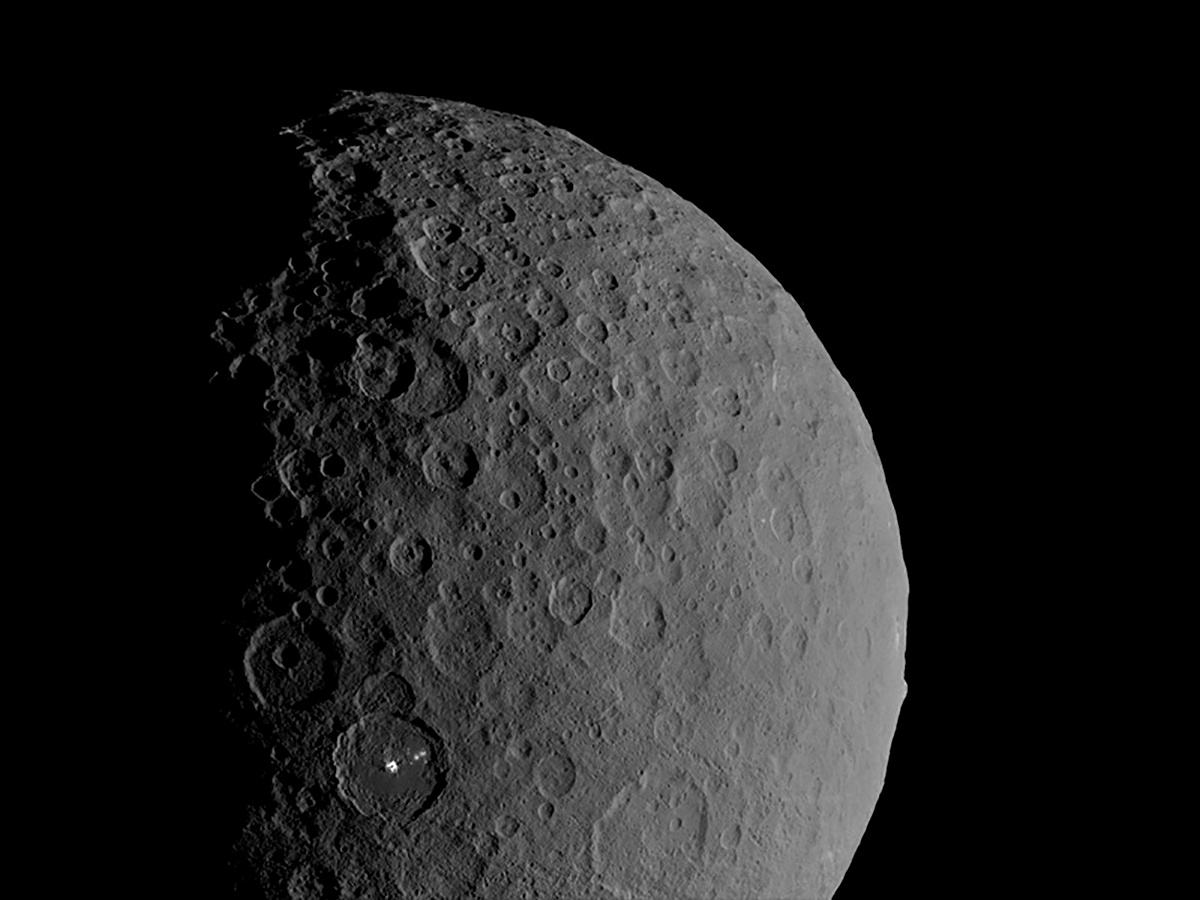
Madeline Sponsler, FISM News
[elfsight_social_share_buttons id=”1″]
Ceres, the largest object in the asteroid belt between Mars and Jupiter, is an “ocean world” with a big reservoir of salty water under its frigid surface, scientists said in findings that raise interest in this dwarf planet as a possible outpost for life.
This week, Research was published based on data obtained by NASA’s Dawn spacecraft. That spacecraft flew as close as 22 miles from the surface in 2018, and can now provide a new understanding of Ceres, including evidence indicating it remains geologically active with cryovolcanism – volcanoes oozing icy material.
The findings confirm the presence of a reservoir of saltwater below the surface remnants of a vast subsurface ocean that has been gradually freezing.
“This elevates Ceres to ‘ocean world’ status, noting that this category does not require the ocean to be global,” said planetary scientist and Dawn principal investigator Carol Raymond.
The research was published in the journals Nature Astronomy, Nature Geoscience and Nature Communications.
Other solar system bodies beyond Earth where subsurface oceans are known or appear to exist include Jupiter’s moon Europa, Saturn’s moon Enceladus, Neptune’s moon Triton and the dwarf planet Pluto.
Water is considered a key ingredient for life. Scientists want to assess whether Ceres was ever habitable by microbial life.
“There is major interest at this stage,” said planetary scientist Julie Castillo of NASA’s Jet Propulsion Laboratory, “in quantifying the habitability potential of the deep brine reservoir, especially considering it is cold and getting quite rich in salts.”
Sourced from Reuters
